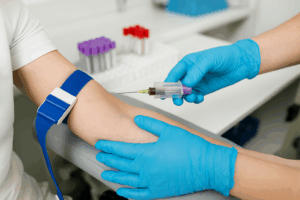🌿 Backed by Science: Latest Research on Stroke Prevention You Can Trust 🌿
Discover proven, science-backed strategies to prevent stroke based on the latest research from Harvard, PubMed, and Mayo Clinic.
🛍️ Amazon Affiliate Disclosure:
As an Amazon Associate, I may earn from qualifying purchases. This means if you click an Amazon link and make a purchase, I may earn a small commission — at no extra cost to you. Your support helps me continue sharing helpful, science-backed wellness resources through AllHealthFit1. 💚 Thank you!
🌿 What the Latest Research Says About Stroke Prevention
Recent findings from Harvard Health and the Mayo Clinic confirm what many in the medical field have long known: stroke prevention is both possible and powerfully achievable through lifestyle, diet, and consistent monitoring.
Researchers highlight that managing blood pressure, reducing inflammation, and identifying silent conditions like atrial fibrillation significantly lower stroke risk. One key recommendation? Regular use of a blood pressure monitor — especially at home.
✅ Featured Wellness Tool: Blood Pressure Monitor for Home Use
Monitoring your blood pressure at home is essential for catching early signs of hypertension and arrhythmia.
Easy, accurate blood pressure checks—right from home!
This Automatic Upper Arm Blood Pressure Monitor includes:
- A 4.5-inch backlit display for easy reading
- Adjustable large cuff (9 to 17 inches) for accurate results on most adult users
- Built-in arrhythmia detection
- Memory capacity for 2 users with 199 readings each
- Battery-powered, portable and convenient for use anywhere
A reliable and user-friendly choice for at-home hypertension tracking.

✅ Why Monitoring Blood Pressure Is Non-Negotiable for Silent Killers
High blood pressure (hypertension) is one of the most dangerous silent killers — often showing no symptoms while damaging arteries and organs. It’s also the number one controllable risk factor for stroke.
The American Heart Association warns that even mildly elevated readings, if left unchecked, can silently damage blood vessels and increase stroke risk.
Consistent blood pressure monitoring with a trusted device helps detect dangerous trends early — long before symptoms appear.
✅ Atrial Fibrillation and the Role of Blood Pressure Monitoring in Detecting Silent Threats
According to Mayo Clinic studies, people with atrial fibrillation (AFib) are five times more likely to have a stroke. AFib is another one of the silent killers that can go undetected for years.
Home-use blood pressure monitors that detect irregular heartbeats can help flag potential AFib cases early — supporting better heart and kidney health.
👉 A feature like arrhythmia detection is more than just a bonus — it’s potentially life-saving and should be part of your daily health checks.
✅ Anti-Inflammatory, Fiber-Rich Diets and Gut Health: Powerful Tools for Stroke Prevention
Stroke risk isn’t just about blood pressure — it’s also about systemic inflammation and metabolic health.
A 2024 PubMed study linked chronic inflammation to higher stroke rates, while additional research emphasizes the importance of gut health and a fiber-rich diet for reducing inflammation and improving cholesterol levels.
What helps:
- Diets rich in leafy greens, fatty fish, olive oil, and berries
- Avoiding processed foods and excess sugar
- Supporting gut health with probiotics and high-fiber foods
- Prioritizing cholesterol screening and Hemoglobin A1c tests to catch high blood sugar early
🌱 Nutrition isn’t just food — it’s medicine, and your first defense against stroke.
✅ The Role of Routine Lab Testing in Detecting Stroke Risk Early
Many risk factors for stroke — such as high blood sugar, abnormal cholesterol, and early kidney dysfunction — are detectable only through routine lab testing.
Tests to consider:
-

Lab testing saves lives—know your numbers. - Lipid panel for cholesterol screening
- FIT colorectal screening for gut and colon health
- Kidney function tests to monitor renal health
Regular testing can reveal issues before they become serious, making early lifestyle or medical interventions possible.
💡 Combine these labs with daily blood pressure monitoring for a complete prevention strategy.
🌿 Frequently Asked Questions (FAQs)
1. What are the types of blood pressure?
Systolic and diastolic pressure. Systolic is the pressure when your heart beats; diastolic is the pressure between beats.
2. What is normal blood pressure?
Less than 120/80 mmHg is considered normal.
3. What are common stroke symptoms?
Sudden weakness, confusion, trouble speaking, vision loss, or severe headache.
4. Can stroke be prevented?
Yes. Healthy diet, regular exercise, blood pressure monitoring, and managing conditions like diabetes help reduce risk.
5. How often should I check my blood pressure?
At least once a day if you’re managing hypertension or at risk. Otherwise, weekly or monthly with your provider’s guidance.
6. What does a home blood pressure monitor do?
It tracks your blood pressure and some models also detect irregular heartbeats (arrhythmia).
7. Is high cholesterol linked to stroke?
Yes, high LDL cholesterol contributes to plaque buildup, which increases stroke risk.
8. What is atrial fibrillation (AFib)?
A heart rhythm disorder that increases the chance of clot formation, potentially leading to stroke.
9. Can poor sleep increase stroke risk?
Yes. Chronic sleep deprivation raises cortisol and blood pressure.
10. Is family history a strong risk factor for stroke?
Yes, genetics play a role, but lifestyle changes can significantly lower risk.
📚 Looking for more articles like this?
Visit the 🌿 AllHealthFit1 Health and Wellness Blog Archive 🌿 to explore expert-backed tips on fitness, gut health, natural remedies,
and more—all in one place.
🌱✨ AllHealthFit1 Protip: Never ignore your numbers. Knowing your blood pressure today can prevent a life-altering stroke tomorrow. Prevention begins with data.
🌿 AI Assistance Disclosure: 🖋️ Crafted with care and a sprinkle of AI assistance — personally reviewed for accuracy and wellness! 🌿
⚠️ Medical Disclaimer: This content is for informational purposes only and is not intended as a substitute for professional medical advice. Always consult your healthcare provider for diagnosis, treatment, or significant health decisions.
📚 References: 📚 Harvard Health Publishing – How to Lower Stroke Risk: Lifestyle & Medical Factors
📚 Mayo Clinic – Stroke Prevention: What You Can Do
📚 PubMed – Inflammation and Stroke Risk: Current Evidence

📸 Meet Baby — He’s my loyal assistant and wellness sidekick! 🐾💙
🌱✨ AllHealthFit1 Protip: Never ignore your numbers. Knowing your blood pressure today can prevent a life-altering stroke tomorrow. Prevention begins with data.
🌿 AI Assistance Disclosure: 🖋️ Crafted with care and a sprinkle of AI assistance — personally reviewed for accuracy and wellness! 🌿
⚠️ Medical Disclaimer: This content is for informational purposes only and is not intended as a substitute for professional medical advice. Always consult your healthcare provider for diagnosis, treatment, or significant health decisions.
📚 Looking for more articles like this?
Visit the 🌿 AllHealthFit1 Health and Wellness Blog Archive 🌿 to explore expert-backed tips on fitness, gut health, natural remedies,
and more—all in one place.
🖊 Curious as to who I am? Read my full story here.
In Health & Wellness,
Marjorie DiCarlo, M.D., Ph.D., M.P.H.
Founder, AllHealthFit1 ❤️🏃♀️🍃
🌱 More Wellness Reads 🌱
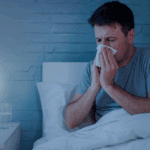 🌱 Why Indoor Allergies Feel Worse at Night — And What You Can Do About It 🌱
🌱 Why Indoor Allergies Feel Worse at Night — And What You Can Do About It 🌱
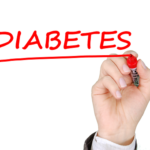 Mastering Diabetes for a Healthier Life: Essential Facts You Need to Know
Mastering Diabetes for a Healthier Life: Essential Facts You Need to Know
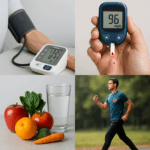 🌱 Stay Ahead of Silent Killers: Monitor Blood Pressure, Sugar & More 🌱
🌱 Stay Ahead of Silent Killers: Monitor Blood Pressure, Sugar & More 🌱
 🌿AllHealthFit1 Health and Wellness Blog Archive🌿
🌿AllHealthFit1 Health and Wellness Blog Archive🌿
 🍃 5 Everyday Habits That Secretly Harm Your Eyes and How to Fix Them! 🍃
🍃 5 Everyday Habits That Secretly Harm Your Eyes and How to Fix Them! 🍃
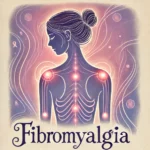 Is There a Correlation Between Osteomalacia and Fibromyalgia?
Is There a Correlation Between Osteomalacia and Fibromyalgia?
 🍃10 Empowering Tips for Healthy Eating to Manage Hypertension🍃
🍃10 Empowering Tips for Healthy Eating to Manage Hypertension🍃
 🌿 Are Carrots Rich in Vitamin A Truly Beneficial for Your Vision? 🌿
🌿 Are Carrots Rich in Vitamin A Truly Beneficial for Your Vision? 🌿
Powered by YARPP.

